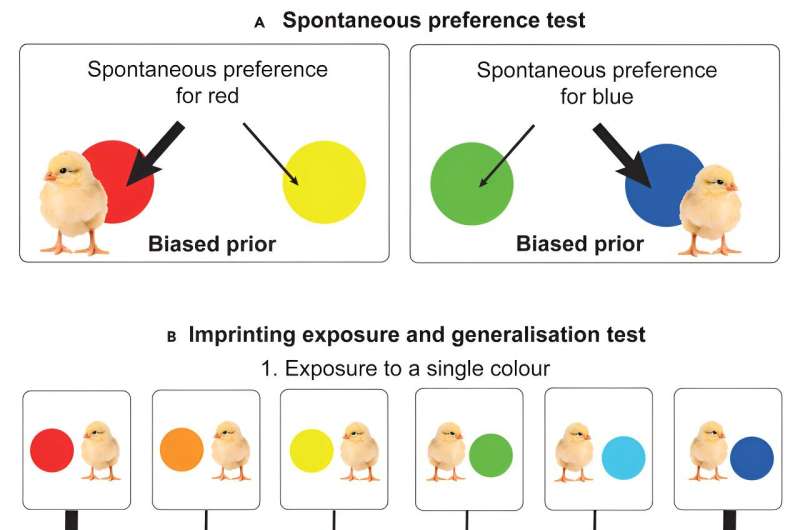
Have you ever wondered why baby chicks, those adorable fluffy bundles of joy, are such a vibrant yellow? It’s not just for aesthetic appeal; their bright plumage serves several important purposes. This article delves into the fascinating science behind chick coloration, exploring the role of carotenoids in their diet and how this color can act as a visual signal for other chicks and potential mates.
This exploration will cover the specific pigments responsible for the yellow hue, examine how these pigments are acquired through their diet, and discuss how chick coloration reflects their nutritional status and overall health. We’ll also uncover how this vibrant color plays a crucial role in communication within the chicken world.
Baby Chick Coloration
Baby chicks, or hatchlings, emerge from their eggs with a distinctive yellow plumage that sets them apart from adult chickens. This bright yellow coloration is not present at birth but develops shortly after hatching as the chick’s feathers grow and are exposed to sunlight. The intensity of the yellow can vary depending on factors such as genetics, diet, and environmental conditions.
The yellow color in chicks primarily stems from carotenoids, a group of pigments found naturally in plants and animals. These pigments are responsible for the vibrant colors in many fruits, vegetables, and flowers. When ingested by chicks, carotenoids are absorbed into their bloodstream and transported to feather follicles, where they are incorporated into the growing feathers.
Carotenoids in Chicks’ Diet
The primary source of carotenoids for baby chicks is their feed. Commercial chick starter feeds are specifically formulated to provide a balanced diet that includes adequate amounts of carotenoids. These pigments are often derived from sources like marigold petals, alfalfa meal, and corn gluten meal.
Providing chicks with a diet rich in carotenoids is crucial for their growth and development. Carotenoids not only contribute to the vibrant yellow color of their feathers but also play a vital role in supporting their immune system and overall health. A deficiency in carotenoids can lead to pale or dull-colored feathers, indicating a potential nutritional imbalance.
Nutritional Status and Color
The intensity of a chick’s yellow coloration can serve as an indicator of its nutritional status. Chicks that are well-nourished and receiving a balanced diet rich in carotenoids will exhibit a brighter, more vibrant yellow plumage. Conversely, chicks that are malnourished or lacking essential nutrients may have paler or less intense yellow feathers.
Farmers and poultry breeders often use chick coloration as a visual cue to assess the overall health of their flock. A uniform bright yellow color among chicks typically indicates a healthy and well-fed population. However, any noticeable variations in feather color can prompt further investigation to identify potential nutritional deficiencies or health issues.
Visual Signals for Mates
In the chicken world, coloration plays a significant role in mate selection. Male chickens, known as roosters, often display brighter and more intense yellow plumage than females, called hens. This vibrant coloration serves as a visual signal to attract potential mates, demonstrating their genetic fitness and overall health.
Hens are attracted to roosters with the most vibrant yellow feathers, as this indicates a strong immune system and good foraging abilities. The intensity of the yellow color can also influence a rooster’s dominance within the flock, with brighter-colored individuals often holding higher social status.
Health Indicators
Beyond mate selection, chick coloration can also serve as an indicator of their overall health. Healthy chicks typically exhibit bright, even-toned yellow feathers. However, any changes in feather color, such as patches of dullness or discoloration, can signal underlying health issues.
For example, pale or white patches on a chick’s feathers may indicate a deficiency in essential nutrients, while reddish or brownish hues could suggest an infection or parasite infestation. Observing any significant changes in chick coloration should prompt veterinary attention to ensure proper diagnosis and treatment.
Conclusion
The vibrant yellow plumage of baby chicks is not merely a charming aesthetic feature; it is a complex interplay of genetics, diet, and environmental factors. Carotenoids, derived from their feed, are responsible for the bright yellow color, which serves as a visual signal for other chicks and potential mates, indicating health and nutritional status.
Understanding the science behind chick coloration allows us to appreciate the intricate mechanisms that govern their growth, development, and social interactions within the chicken world.
